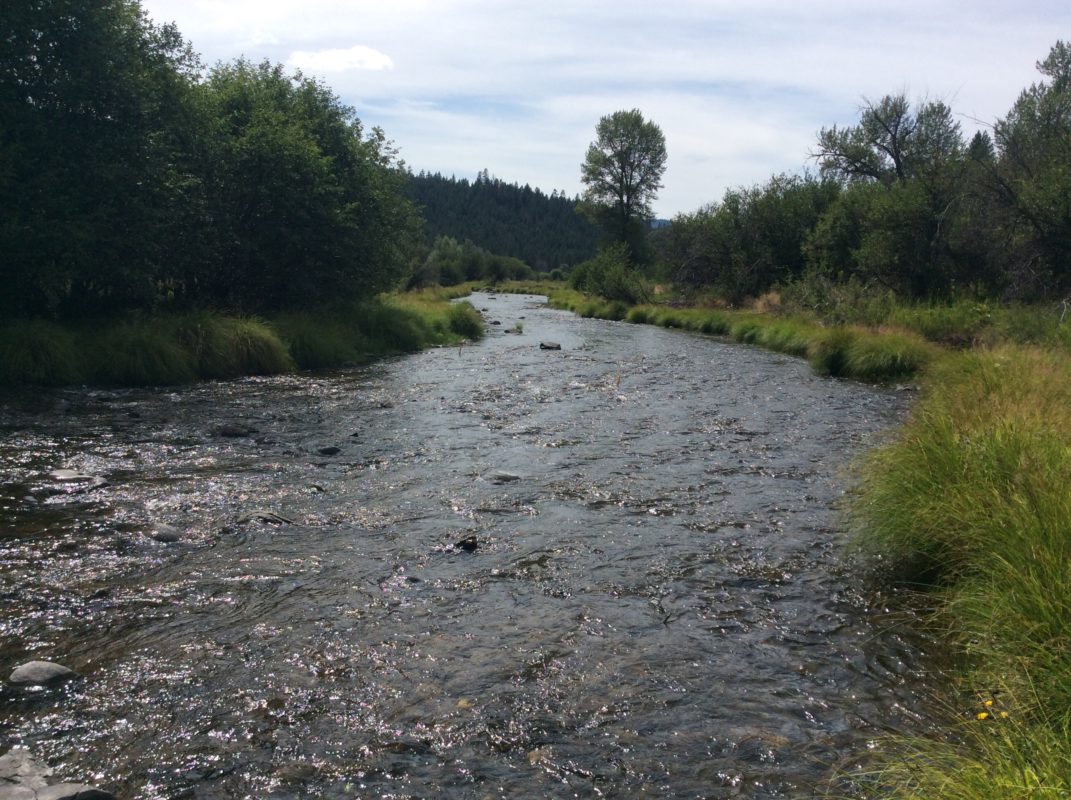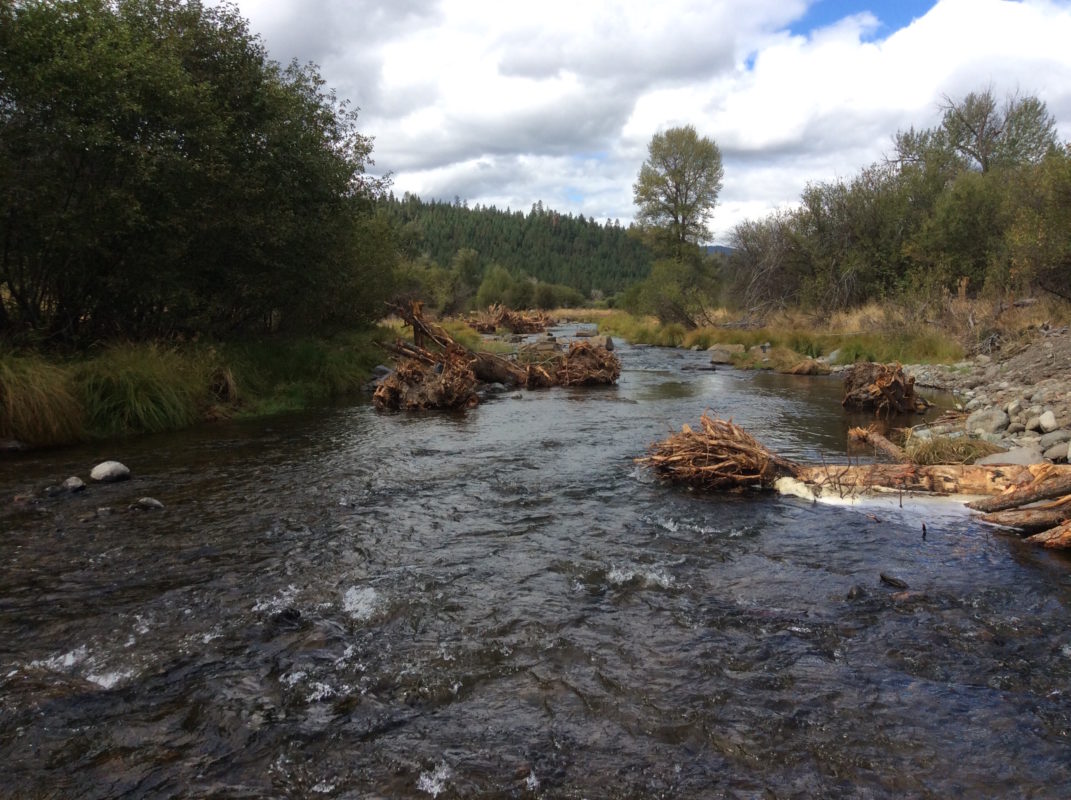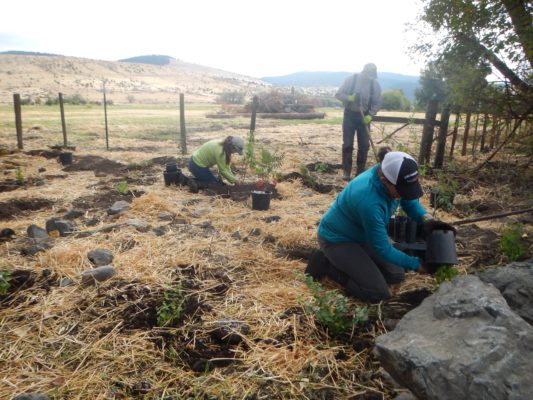The Dunstan Low Flow Enhancement Project is a floodplain re-connection and habitat improvement project on the Middle Fork John Day River. The purpose of this project was to restore the channel to a more appropriate geomorphic condition that will increase depth and cover at base flow for juvenile rearing.
This project is located on the Dunstan Preserve on the Middle Fork John Day River, owned and managed by The Nature Conservancy. It involves several main objectives to re-connect lost floodplain interaction and natural aquatic processes, including: excavation of two historic side channels, removal of rock barbs and rip-rap, installation of Large Woody Debris structures, and formation of roughened riffle/ island complexes. Placement of rock barbs and rip-rap in the late 1960’s and early 1970s prevented the river from naturally migrating cross the floodplain in this section of the basin. It also caused habitat over-simplification of the main channel and disconnection from historic side channels in several areas. A historic railroad Grade from the Sumpter Railroad is located in the floodplain of the project area, and contributes to the lack of floodplain connection through this zone.
Before and After Dunstan Project effort:
[twentytwenty]

Phase one construction of the project was completed in the summer of 2015 (as shown in the photos below). During the course of construction, 22 anchored log structures were placed in two sections of the Middle Fork John Day River. Following construction in the fall of 2015, re-seeding and planting of native species was completed in areas disturbed from construction efforts, including access routes and staging areas. A total of 4,725 seedlings were transplanted in areas of disturbed, transitional, and riparian zones.
The Dunstan Low Flow Enhancement Project is considered a success for The Confederated Tribes of the Warm Springs Reservation of Oregon and their partners. This project compliments other fish habitat restoration projects occurring on the Middle Fork John Day River and specifically addresses key objectives outlined in the John Day River Watershed Strategy.



